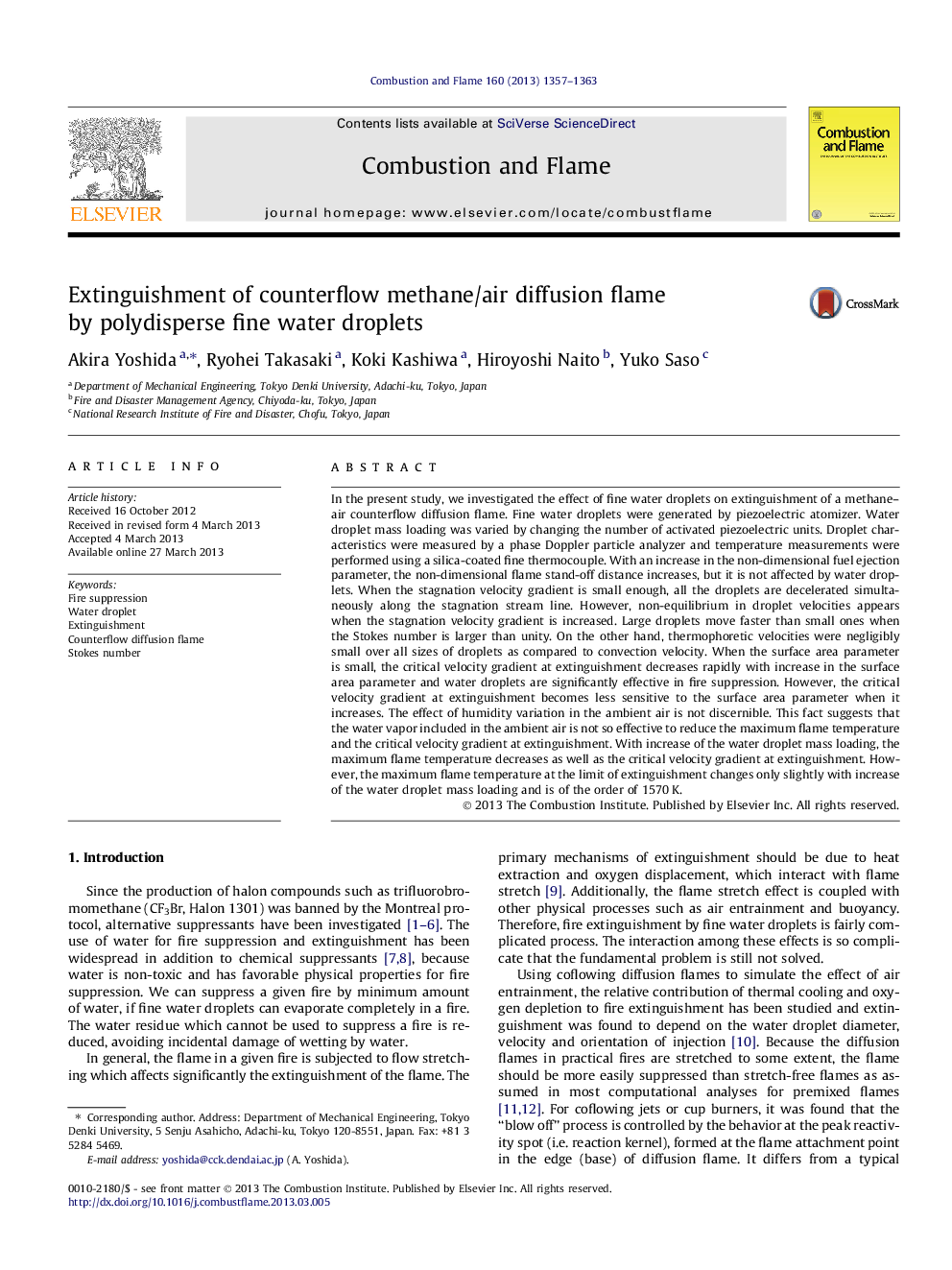| کد مقاله | کد نشریه | سال انتشار | مقاله انگلیسی | نسخه تمام متن |
|---|---|---|---|---|
| 168880 | 457958 | 2013 | 7 صفحه PDF | دانلود رایگان |

In the present study, we investigated the effect of fine water droplets on extinguishment of a methane–air counterflow diffusion flame. Fine water droplets were generated by piezoelectric atomizer. Water droplet mass loading was varied by changing the number of activated piezoelectric units. Droplet characteristics were measured by a phase Doppler particle analyzer and temperature measurements were performed using a silica-coated fine thermocouple. With an increase in the non-dimensional fuel ejection parameter, the non-dimensional flame stand-off distance increases, but it is not affected by water droplets. When the stagnation velocity gradient is small enough, all the droplets are decelerated simultaneously along the stagnation stream line. However, non-equilibrium in droplet velocities appears when the stagnation velocity gradient is increased. Large droplets move faster than small ones when the Stokes number is larger than unity. On the other hand, thermophoretic velocities were negligibly small over all sizes of droplets as compared to convection velocity. When the surface area parameter is small, the critical velocity gradient at extinguishment decreases rapidly with increase in the surface area parameter and water droplets are significantly effective in fire suppression. However, the critical velocity gradient at extinguishment becomes less sensitive to the surface area parameter when it increases. The effect of humidity variation in the ambient air is not discernible. This fact suggests that the water vapor included in the ambient air is not so effective to reduce the maximum flame temperature and the critical velocity gradient at extinguishment. With increase of the water droplet mass loading, the maximum flame temperature decreases as well as the critical velocity gradient at extinguishment. However, the maximum flame temperature at the limit of extinguishment changes only slightly with increase of the water droplet mass loading and is of the order of 1570 K.
Journal: Combustion and Flame - Volume 160, Issue 8, August 2013, Pages 1357–1363